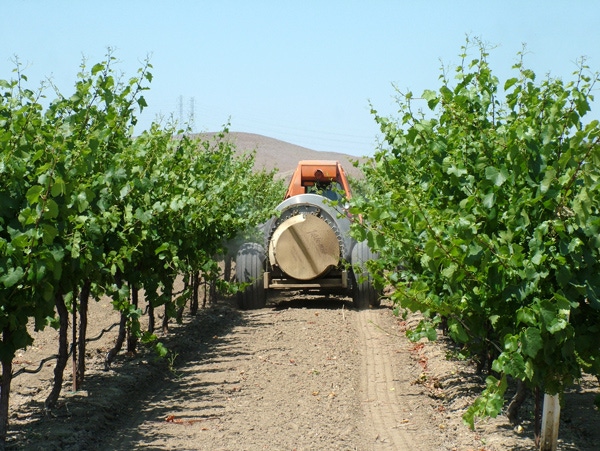
Dealing with a population explosion in San Joaquin Valley vineyards
“Even in blocks where they didn’t flare up last year, vine mealybugs are really bad this year,” Sara Savary says. “Unless they come in with nursery stock, it usually takes a while for their numbers to build up in any one vineyard. But, this year, I’m finding vine mealybugs in vineyards planted just four years ago. These insects are starting to be a concern.”

“They’re everywhere, even in places I haven’t seen them before,” says PCA Sara Savary, with Crop Care Associates, based in Yountville, Calif.
Savary, who works with raisin, table and wine grape growers in the Fresno-Tulare area, is talking about vine mealybugs, which are putting much greater pressure than usual on their vineyards this season.,
“Even in blocks where they didn’t flare up last year, vine mealybugs are really bad this year,” she says. “Unless they come in with nursery stock, it usually takes a while for their numbers to build up in any one vineyard. But, this year, I’m finding vine mealybugs in vineyards planted just four years ago. These insects are starting to be a concern.”
Not only has she been seeing more of this pest, but it came into the vineyards much earlier than usual this season. Typically, Savary notes, she begins spraying wine grapes for vine mealybugs at the end of June or the beginning of July. This year she had to spray one vineyard in late May to control an outbreak of them.
Her usual treatment, involving an application of Movento in late April or early May followed by a tank-mixed spray of Applaud and Assail, has been effective in control the vine mealybugs on her early varieties this year.
“But, with the late reds, we may have to come back to knock them down again in mid- to late-July, because I can already see them right underneath the bark wanting to come back out,” she says. “That usually holds them until harvest.”
Savary’s vineyards aren’t the only ones experiencing high mealybug populations this season. She’s heard similar reports from PCAs throughout the San Joaquin Valley.
Kris Tollerup, University of California Cooperative Extension IPM advisor at the Kearney Agricultural Research & Extension Center in Parlier, and some of his Extension colleagues have also been fielding numerous reports from grape growers of unusually high vine mealybug populations this year.
Although he doesn’t know why the population of this particular pest has exploded this year, he throws out a possible reason or two.
One is the mild weather this past fall and winter, allowing more vine mealbybugs than usual to survive and reproduce this spring.
Also, mild weather for much of this season may have contributed to the higher populations this year. “Hot weather can adversely affect insect populations,” Tollerup says.
While not a threat to grapes, leaffooted plant bug numbers are also way up this year in almond and pistachio orchards. That, too, may reflect weather condition this past fall and winter.
“The number of leaffooted bugs coming into this spring was extremely high,” Tollerup says. “We believe that’s related to mild fall and winter temperatures. They may have enabled this pest, which normally produces about three-and-a-half generations a season before colder weather intervenes at the end of the season, to produce a full fourth generation last fall. That, in turn, would mean more leaffooted plant bugs in the orchards at the start of this season.”
About the Author(s)
You May Also Like



